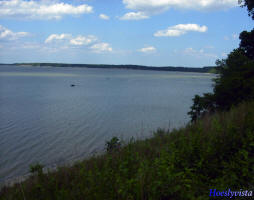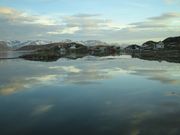 As water disappears from the Arab world, data is falling from the sky
As water disappears from the Arab world, data is falling from the sky
A ground-breaking study released last month shows how the Middle East is losing its fresh water reserves. Prepared jointly by NASA and the University of California Irvine, and published by Water Resources Research, the report offers a range of alarming statistics on both the amount and rate of the region’s water loss.
Satellite missions from 2003 to 2009, supplemented by remote-sensing data and output from land surface models, show a decrease in volume of the region’s freshwater reserves of 143.6 cubic kilometers during the 7-years of the study. This rate of water loss is among the largest liquid freshwater losses on the planet during this period. The 143.662.8 km3 loss during the 7-year study period is nearly equivalent in volume to the entire Dead Sea, which has an average volume of 147 km3.
The analyses presented suggests that groundwater depletion is the largest single contributor to the this observed negative trend, accounting for approximately 60 percent of the total volume of water lost, the majority of which occurred after the onset of drought in 2007.
Why is this not surprising? For one, a complex system of trans-boundary, groundwater aquifers underlies this region. Secondly, domestic and international monitoring, regulation, and data-sharing related to these groundwater aquifers are sorely lacking. While the region is subject to harsh environmental conditions, an absence of effective monitoring and management across borders leaves little basis for establishing strategies for conserving these precious, natural resources.
But if countries do not openly share information on water use, especially aquifer withdrawals, how can one verify these results? Extracting groundwater at a faster rate than it can be naturally replenished has some clearly observable effects, such “subsidence”, a geological term that describes the sinking of the earth’s surface. Reports of land subsidence due to over-abstraction of groundwater in places like Teheran, Iran, are well-documented. One can also use information on newly-constructed wells, such as the 1000 wells reportedly dug by the Iraqi government from 2007 to 2009 due to a decline in surface water availability.
On a side note, negative trends in volumetric losses in snow water and soil moisture in this same time period accounted for 20 percent of the observed water losses. However, both snow water and soil moisture loss are recognized to be largely climate-driven and are expected to be in further steady decline in the foreseeable future.
What do these results bode for the future of water in the Middle East? Traditionally, lack of trans-boundary cooperation, especially with little to no incentives for neighbors upstream to participate, has often led to downstream neighbors reverting to non-renewable groundwater supplies to satisfy demand.
These latest revelations will "even the playing field" in two very important ways. The first is that the 20 percent of observed water losses due to climate impacts may affect upstream and downstream neighbors more equitably than surface water abstractions do. The second, even , more important one, is that the technology mix of satellite, remote sensing, land surface models, and meteorological data makes individual government self-reporting on water abstractions, irrelevant. Data-driven models can approximate true values of surface as well as groundwater withdrawals. They are an objective source of information that all stakeholders can have equal access to.
How, or will, this affect groundwater withdrawal choices? Who knows? But we can measure it much more easily than before. And that puts us one step closer to understanding the gap between water supply and water demand in each of our Middle Eastern countries. There is very little mystery about what is happening, or indeed why it is happening. There is cause for alarm, but the hard evidence is also a potential foundation for a regional effort to manage and conserve a precious yet dwindling resource.
--
Read also:
The world's driest region, the Middle East and North Africa (MENA), is getting drier at an alarming rate
And yet, despite massive population growth (the Middle East's population grew 61 percent from 1990 to 2010 to 205 million people) predictions of so-called "water wars" have failed to materialize. So how has a region that water experts say ceased to have enough water for its strategic needs in1970 proved so resilient to water scarcity? "Trade is the first means of being resilient; it's the process that enables an economy to be resilient. The ability to trade effectively depends on the strength and diversity of the economy," Anthony Allan from King's College London and the School of Oriental and African Studies declared.
That does not literally mean that countries import water directly; it is rather that because so much water is used, not for drinking, but for agriculture (around 90 percent), by importing food staples like wheat you are in effect importing water, something Allan calls "virtual water". As a result, the region's growing population imports around a third of its food - a figure that shoots up in the Gulf states where arable land is negligible.
But while such resilience may "miraculously" solve extreme water scarcity and make life that exists today possible in the Middle East, it can create its own vulnerabilities; countries need economies that can generate enough foreign currency to pay for imports. That may be easy in oil-rich countries with small populations like the United Arab Emirates (UAE) and Qatar, but it is far more difficult in places like Egypt, which struggles to find the reserves to pay for wheat imports for its 84 million citizens in a context of declining crude oil exports and a slump in tourism.
Such trade "resilience" is also largely unaffordable in a place like Yemen - the region's poorest country, which has 25 million people in an extremely water scarce (and hence food scarce) environment. Each Yemeni only has access to about 140 cubic metres of water annually and the capital, Sana'a, is on track to be the first in the world without a viable water supply.
Further information on EMWIS website
| Contact information |
TRACY HART, WB
|
|---|---|
| News type | Inbrief |
| File link |
http://onlinelibrary.wiley.com/doi/10.1002/wrcr.20078/pdf |
| File link local |
|
| Source of information | World Bank |
| Keyword(s) | water data, drought, satellite data, remote sensing, groundwater |
| Subject(s) | HYDRAULICS - HYDROLOGY , INFORMATION - COMPUTER SCIENCES , MEASUREMENTS AND INSTRUMENTATION , METHTODOLOGY - STATISTICS - DECISION AID , NATURAL MEDIUM , POLICY-WATER POLICY AND WATER MANAGEMENT , RISKS AND CLIMATOLOGY , TOOL TERMS , WATER DEMAND |
| Relation | http://onlinelibrary.wiley.com/doi/10.1002/wrcr.20078/abstract |
| Geographical coverage | Palestine,Jordan,Israel,Lebanon,Syria,Iraq,Saudi Arabia,Turkey,Egypt,Sudan,Iran,Cyprus, |
| News date | 22/03/2013 |
| Working language(s) | ENGLISH |
 you are not logged in
you are not logged in





